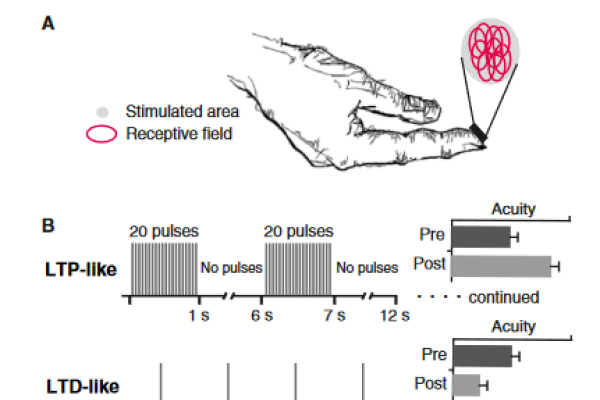2013-06-03

It sounds like an old dream is becoming true. Recent work suggests that intensive training may not be necessary for skill learning. Skills can be effectively acquired by a complementary approach in which the learning occurs in response to mere exposure to repetitive sensory stimulation. Such training-independent sensory learning induces lasting changes in perception and goal directed behaviour in humans, without any explicit task training. We suggest that the effectiveness of this form of learning in different sensory domains stems from the fact that the stimulation protocols used are optimized to alter synaptic transmission and efficacy. While this approach directly links behavioural research in humans with studies on cellular plasticity, other approaches show that learning can occur even in the absence of an actual stimulus. These include learning through imagery or feedback-induced cortical activation, resulting in learning without task training. All these approaches challenge our understanding of the mechanisms that mediate learning. Apparently, humans can learn under conditions thought to be impossible a few years ago. Although the underlying mechanisms are far from being understood, training-independent sensory learning opens novel possibilities for applications aimed at augmenting human cognition.
Beste, C., Dinse, H.R. (2013). Learning without training. Curr Biol, 23, 489-499.

It sounds like an old dream is becoming true. Recent work suggests that intensive training may not be necessary for skill learning. Skills can be effectively acquired by a complementary approach in which the learning occurs in response to mere exposure to repetitive sensory stimulation. Such training-independent sensory learning induces lasting changes in perception and goal directed behaviour in humans, without any explicit task training. We suggest that the effectiveness of this form of learning in different sensory domains stems from the fact that the stimulation protocols used are optimized to alter synaptic transmission and efficacy. While this approach directly links behavioural research in humans with studies on cellular plasticity, other approaches show that learning can occur even in the absence of an actual stimulus. These include learning through imagery or feedback-induced cortical activation, resulting in learning without task training. All these approaches challenge our understanding of the mechanisms that mediate learning. Apparently, humans can learn under conditions thought to be impossible a few years ago. Although the underlying mechanisms are far from being understood, training-independent sensory learning opens novel possibilities for applications aimed at augmenting human cognition.
Beste, C., Dinse, H.R. (2013). Learning without training. Curr Biol, 23, 489-499.